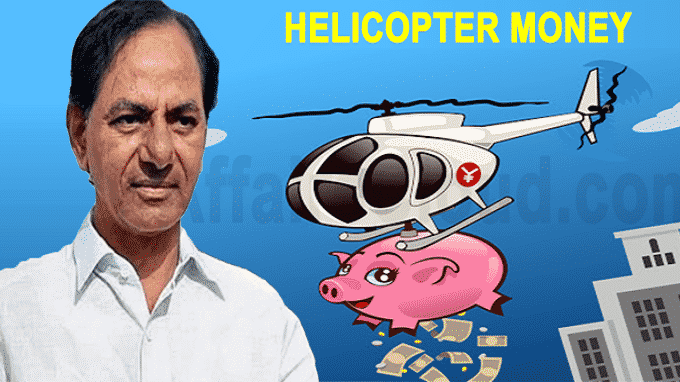While formulating strategies to curb the adverse impact of COVID-19, a term “helicopter money” landed on the internet surface. In India, this term has been used by Telangana Chief Minister (CM) Kalvakuntla Chandrashekhar Rao during a video-conference with Prime Minister (PM) Narendra Modi.
- In order to deal with the financial crisis powered by COVID-19, the Telangana CM has recommended that RBI should implement ‘helicopter money’ by way of quantitative easing (QE) policy. QE followed all over the world, is the only way to deal with the situation.
- He also suggested releasing 5% funds from Gross Domestic Product (GDP) to improve money circulation in the system and boost the economy.
Other recommendations:
-Government should increase the FRBM (Fiscal Responsibility and Budgetary Management) limit to 5% from the existing 3%.
-A task force should be created with the PM as chairman and cabinet ministers as members to draft an action plan on helping farmers.
What is Helicopter money?
This term has been coined by American economist Milton Friedman in his famous paper “The Optimum Quantity of Money” of 1969. Helicopter money is an unconventional method used by the Central Bank under which the funds are transferred from the Central Bank to the state and Union government which empowers the general public with money to buy things, resulting boost in the economy.
- It involves printing large sums of money and distributing it to the public denoting helicopter dropping money from the sky. It is a tool to bring the declining growth of the economy (recession) back on track.
- Difference Between Quantitative Easing & Helicopter money:
Quantitative easing the bank buys bonds from the government – money that the government will have to repay, but helicopter money doesn’t necessarily have to be repaid.
About Telangana:
Capital– Hyderabad
Districts– 33
Governor– Dr. (Smt.) Tamilisai Soundararajan




